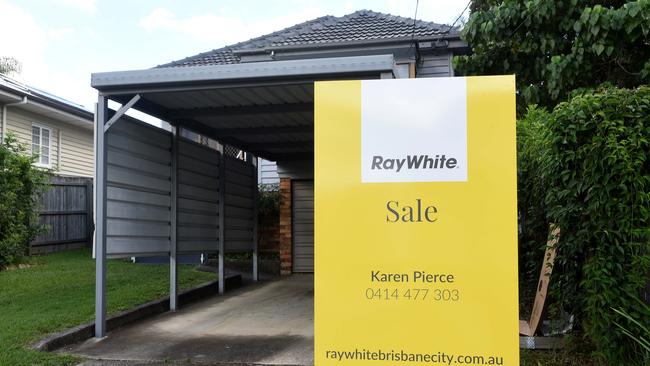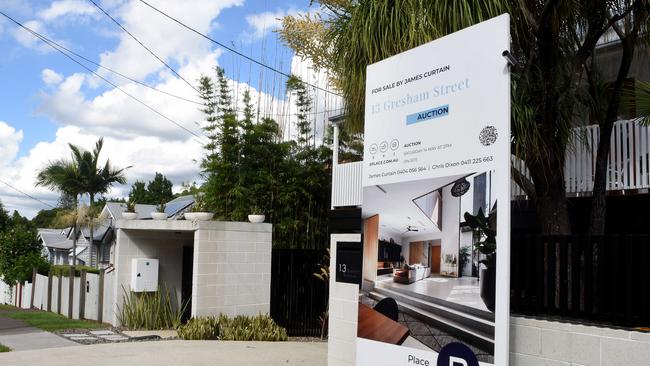Morgan Stanley warns of sluggish mortgage growth in 2023-24
A Morgan Stanley report says home lending is likely to contract as the housing market withers in the face of interest rate rises.

Home lending is set to slow dramatically from 2022 levels and remain sluggish for two years, with regional lenders facing the starkest drop, Morgan Stanley analysts have warned.
The investment bank, in a research note, said system housing growth across the major and regional banks, had moderated in November figures, coming in at 4.7 per cent annualised.
That was down on the 5.5 per cent system growth, on an annualised basis, recorded in September and October.
While that has already moderated, Morgan Stanley analyst Richard Wiles estimated a sharper deterioration and flatlining in home lending growth in the coming year.
He expected home lending across the major banks to fall from 5.1 per cent growth in the 2022 financial year to just 1.9 per cent in the 2023 year.
This is expected to slow ever further to just 1.2 per cent growth in the 2024 financial year as a flurry of rate hikes puts the brakes on mortgage lending. The Reserve Bank aggressively hiked interest rates from a floor of 0.1 per cent in April 2022 to 3.1 per cent in December.
The RBA, which won’t meet until February, is expected to take rates higher when it returns with National Australia Bank forecasting they will peak at 3.6 per cent in March.
Morgan Stanley warned regional banks were set to fare worse that their larger rivals, with mortgage lending expected to tumble from 9.1 per cent growth in the 2022 financial year to just 0.6 per cent in the following 12 months. Lending by regional banks is expected to recover to 2 per cent growth in 2024.

Mr Wiles said ANZ was the best performing bank among the majors, notching up the strongest system growth in November topping 9 per cent. Commonwealth Bank was second, with 7 per cent growth, followed by Westpac at 4 per cent. National Australia Bank was the poorest performer, with growth tracking at almost 1 per cent.
Mr Wiles conceded that mortgage growth was tracking ahead of his estimates for the first half of the 2023 financial year.
“We forecast average Australian housing loan growth at the majors to slow to circa 2 per cent in (the 2023 financial year),” he wrote. “However, it is currently tracking ahead of our estimates for (the first half) at the major banks and is broadly in line with our estimates at (Bendigo and Adelaide Bank) and (Bank of Queensland).”
In a result that may not bode well for Bendigo Bank’s upcoming first-half profits, Morgan Stanley is forecasting a 0.5 per cent contraction in the bank’s home loan growth over that period.
Bendigo Bank recently unveiled a 22 per cent rise in unaudited cash earnings for the five months ended November 30.
The Bank of Queensland is also tracking above Morgan Stanley’s expectations of a flatlining loan book. Instead, BOQ has eked out 0.4 per cent annualised growth in its lending book in three months.
Morgan Stanley found investor loan take-up has been mixed, growing at 3.1 per cent annualised in November. Growth is more muted on a three-month view, up 1.8 per cent.
Several banks have been slashing introductory rates in a bid to scoop up borrowers rolling off fixed-rate mortgages or targeting those shopping around on the back of a spate of rate rises.
A series of rate rises, aimed at taking the heat out of inflation, has also put a dent in home lending and household budgets.
House prices have slumped since April 2022, down 8 per cent according to CoreLogic.
Australians hold almost $2.1 trillion in home loans, with almost 35 per cent or $735bn in fixed-rate mortgages. Many of those are due to expire in the second half of 2023, as mortgages taken out during the pandemic roll off.
Morgan Stanley found household deposit growth topped 8.5 per cent annualised growth in November, up almost $9bn in that month alone.







To join the conversation, please log in. Don't have an account? Register
Join the conversation, you are commenting as Logout